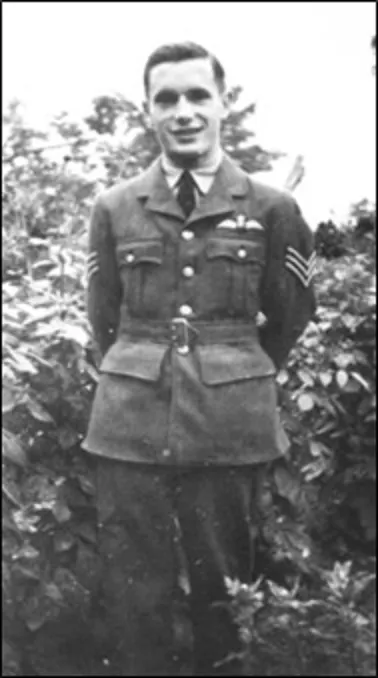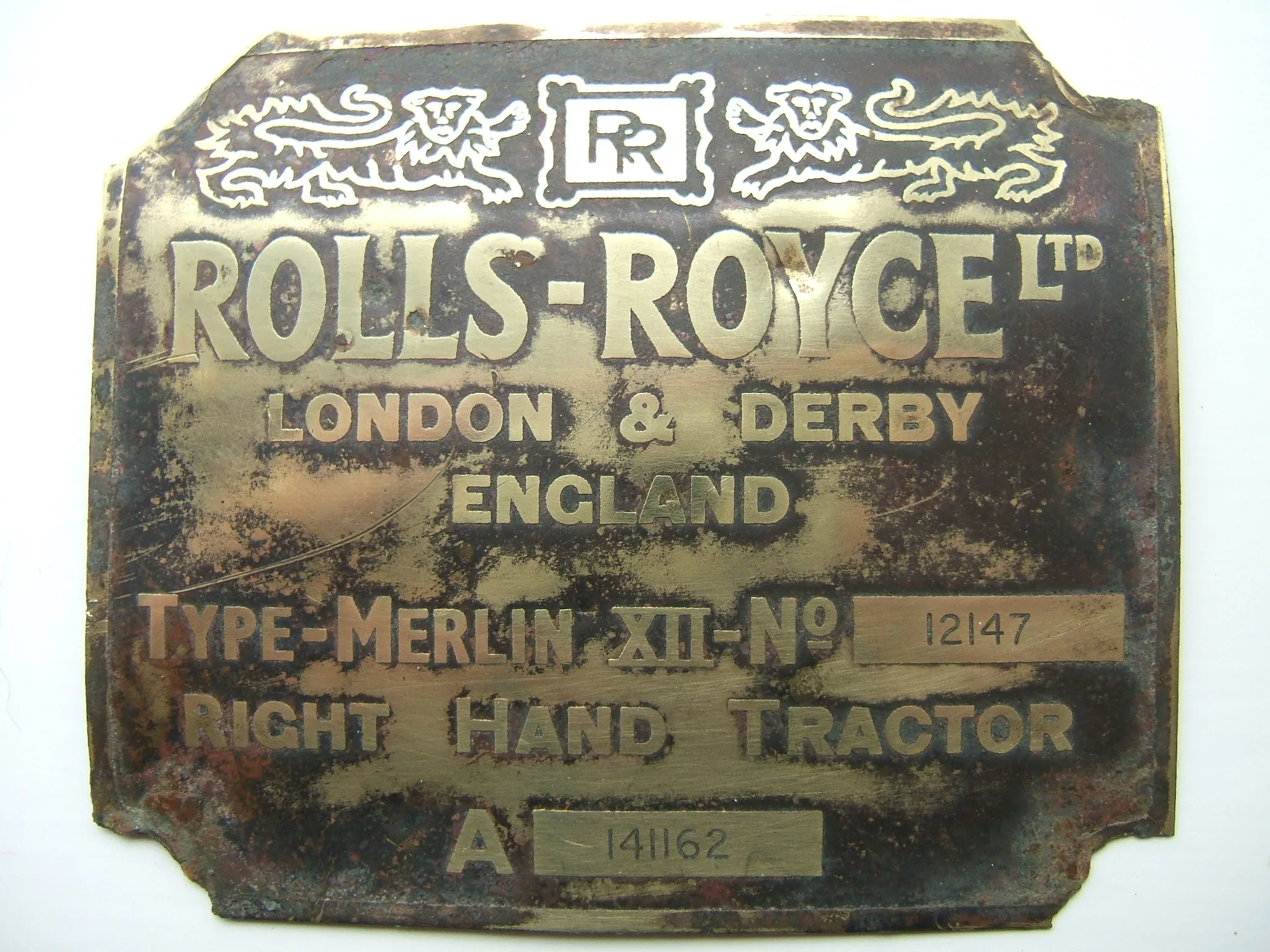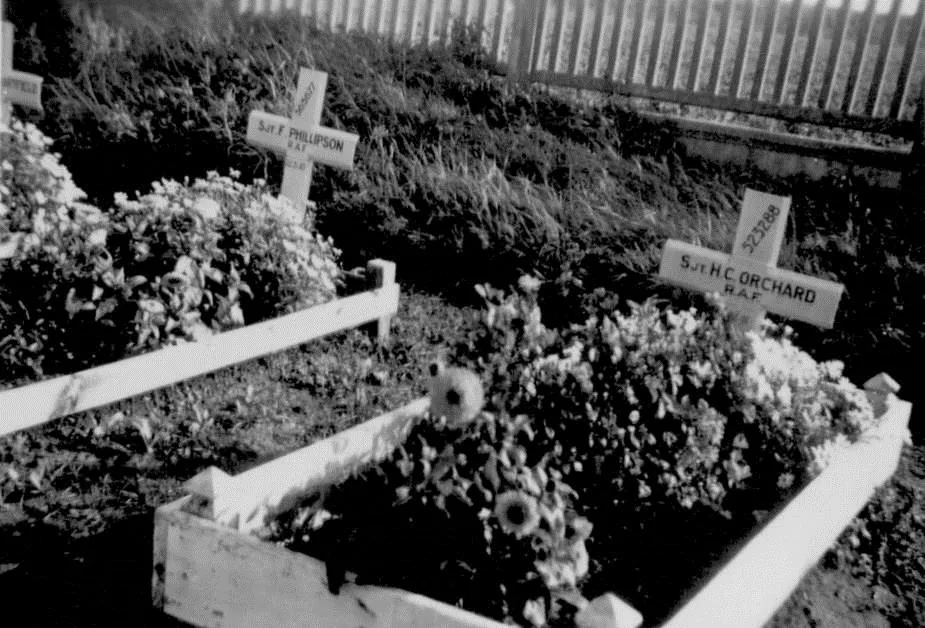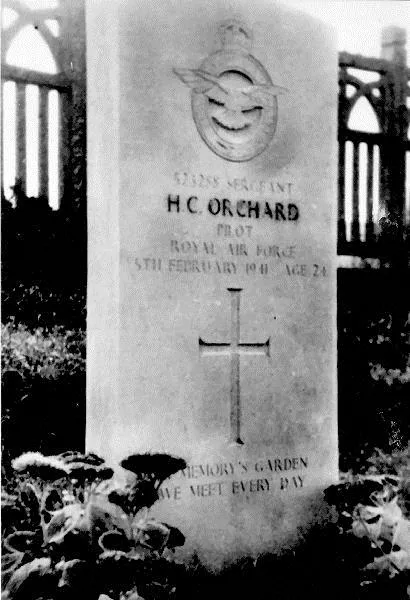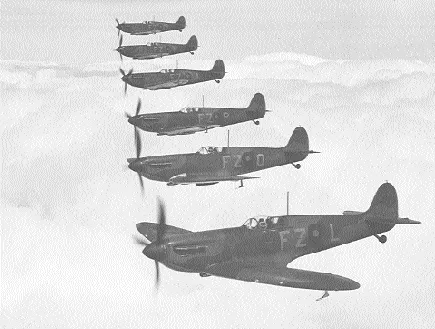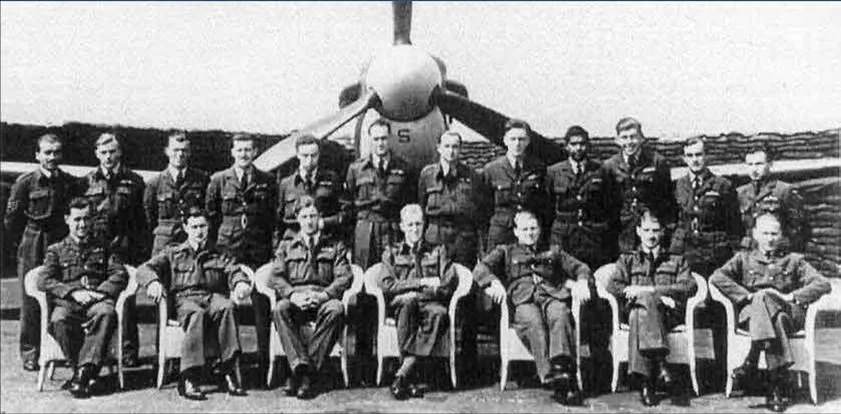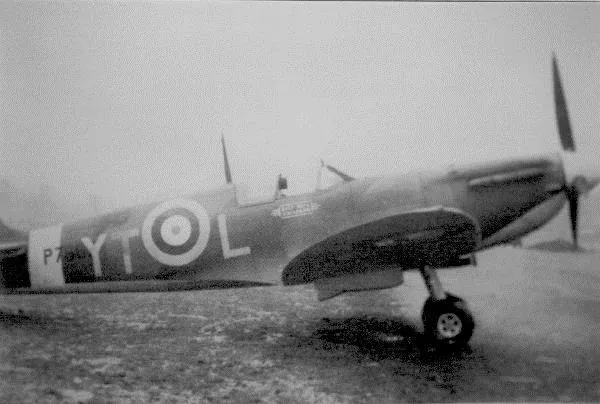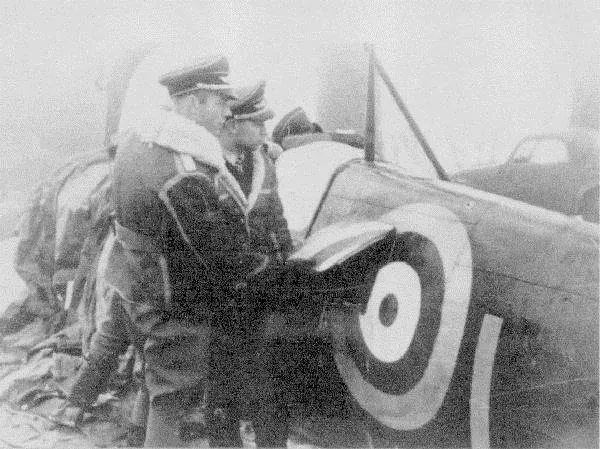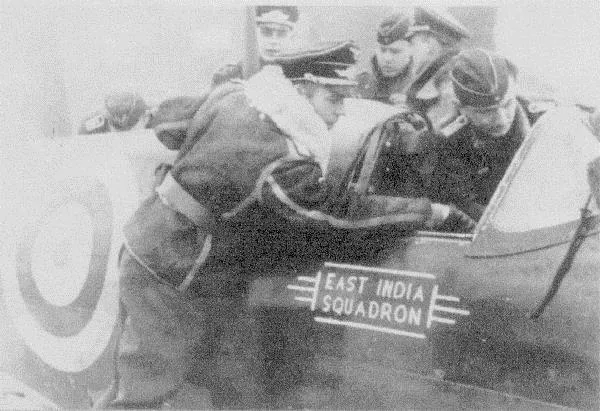FSGT Harold Charles Orchard 523288 (RAF)
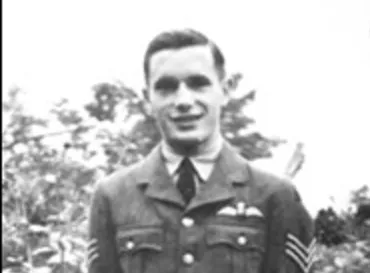


| Squadron/s | 65 SQN RAF |
| Rank On Discharge/Death | Flight Sergeant (FSGT) |
| Date of Birth | 26 Dec 1916 |
| Date of Death | 05 Dec 1941 |
| Contributing Author/s | Vince Conant, 2014 The Spitfire Association |
The actual dates of the Battle of Britain have caused some discussion amongst historians, but for the purposes of Harold Orchard’s story the official dates will be taken. Enough has been written about the Battle to make it unnecessary to repeat it all, except where it has a direct bearing on the RAF career of Harold’s career.
At this stage in the War, the RAF were still flying in the pre-war Fighting Area Attacks consisting of three aircraft in Vic formation, hence Harold's reference to being Red 3 below. Such tactics were soon to be altered, in the light of battle experience, to the much more flexible minimum pairs with a leader, or No.1 being protected by his wing man or No.2. Two such pairs formed a finger four, each mutually protecting the other.
The following is a blow-by-blow account of an enemy encounter by Harold:
“As Red 3 of 65 Squadron, we were detailed to patrol a convoy off Dover. We were at 19,000 feet when we sighted approximately six to eight Me.109's between us and the French coast, at about 9,000 feet. My section dived to attack them and I attacked one which was attempting to evade by diving; he turned and I overshot him, only getting a short burst (1 second) at him, from 300 to 250 yards range. I had lost considerable height and now saw two others in front of me also diving towards the French coast, and I followed, getting in two 1 second bursts from 300 to 100 yards on the first one, when white smoke came from it. I overshot this one owing to initial speed but saw it lurching from side to side as it got nearer the water. I then attacked the 3rd one but only got a short burst from about 350 yards at him before I lost him in a haze at about 100 feet above the water, one mile from the French coast.”
On the 12th of August Harold was piloting R6884, and his Log Book states simply, “Bombed on Take-off” but in fact the event was more dramatic than this, as Jeffrey Quill recounts in the much-quoted extract from his book "Spitfire - A Test Pilot's Story".
He describes how the Squadron was on the grass airfield waiting for the signal from Squadron Leader Saunders to take off when the pilots became aware of a number of crumps and saw a hangar explode. Realising that they were being dive-bombed by Me.110's, the pilots gave their Spitfires full throttle and took off as rapidly as possible, some attempting to engage the enemy which were, in fact, going much too fast to be caught. Miraculously eleven of the twelve planes took off safely.
On Sunday the 18th of August the Luftwaffe launched what was probably the most concerted attacks so far, and Harold was again involved in destroying an enemy aircraft. At around midday the Squadron had just been stood down after a patrol when they were suddenly called to readiness again. Only five pilots were available, and so all took off with F/O Quill leading. P/O Glaser, and Sgt. Pilots Keymer, McPherson and Orchard (in R6883) were all involved in the ensuing action, described here again in Harold's own words in his combat report:
“At 12.51 hours, 65 Squadron left Rochford to patrol Canterbury and then Manston. Yellow leader burst a tyre in the take-off and 'A' Flight patrolled only 5 strong. When at 4,000 feet, a large force of enemy bombers was seen to the North proceeding South-East. This was reported to Control but they were too far to engage. Later, a force of about 40 enemy fighters was observed to the North-West at about 20,000 feet. It appeared possible that there might be an engagement going on with our own fighters, so the leader started to climb up in an Easterly direction to gain height. It was not considered justifiable to attack the bombers with only 5 aircraft.
When at about 10,000 feet a He.111 was observed beneath us proceeding alone in a South-West direction over Foulness. The leader led the Flight down in line astern for a quarter attack - four aircraft of the Flight fired and the aircraft was last seen descending with smoke coming from out of the engine and during the engagement some pieces were seen to fall off the wings.”
After this attack they climbed in accordance with instructions from Control, but the Flight became separated in clouds and in view of the large number of e/a in the vicinity the Flight attempted to reform over base. Then they observed a force of at least sixty bombers proceeding westward along the North side of the Estuary. Our fighters were below them and not in a position to deliver an attack, so they again climbed towards a fighter engagement going on higher up. This, however, became obscured by cloud and the Flight made no further contact with the enemy. B Flight also sighted the enemy formation but could not get near enough to deliver an attack.
The plane was, it is now known, piloted by Lieutenant Rudolf Ahrens of 1st Gruppe of Bomber Geshwader 1, and he was separated from the rest of his unit because of engine trouble. Following the attack by 65 Squadron, he was again attacked, this time by Squadron. Leader Crossley of 32 Squadron, and eventually landed his plane near Snargate, on Romney Marsh. The wounded flight engineer unfortunately died later in Rye Memorial Hospital, the rest of the crew being taken prisoner.
65 Squadron continued to be at the forefront of the action, and on the 22nd of August a patrol was sent up to intercept raiders over the Channel in the early evening. A large force of enemy aircraft were encountered and engaged, and the Squadron claimed one ME109 destroyed, one probably destroyed and one damaged. Unfortunately, Sgt. Pilot Keymer was killed, and Harold's aircraft was damaged, it is believed by Fw. Philipp of II Jagdgeshwader 26, in a Me109. Harold landed Spitfire L1094 back at Manston unhurt, and the aircraft was quickly repaired, Harold returning to Hornchurch in it on the following day.
The routine continued for a few more days until, on the 27th of August, 65 Squadron, which had been in the front line of the fighting for nearly two months, was ordered to rest and refit in Scotland, and so flew to Turnhouse, landing at Church Fenton en route to refuel.
Harold's Log Book shows that after arriving in Scotland at the end of August, he did not fly again until the 13th of October. This is reflected in 65 Squadrons Operations Record which says that they were posted to Turnhouse to train new pilots and give a rest to those pilots who were so heavily engaged in the South.
Nothing else is recorded for September other than routine entries. Whilst in Scotland, 65 Squadron became part of No.13 Group, Fighter Command, sharing Turnhouse with No.141 Squadron who were operating with Boulton Paul Defiant aircraft.
Although the Battle of Britain as such had ended several weeks earlier, Tangmere was still a front-line station, and squadrons operating from it were largely employed on patrolling the south coast and providing convoy escorts. Harold had a change in this routine on the 12th of December when he made a round trip lasting two and a half hours to Church Fenton, Bicester and back to Tangmere.
By January 1941, 65 Squadron was re-equipping with Spitfire MkII's, Harold making his first flight in one, P7732, on the 16th.
The MkII Spitfire was visually the same as its predecessor, the main difference being the fitting of a Rolls-Royce Merlin XII engine. Because it was fitted with more armour plating, the aircraft was heavier than the MkI, and so the increase in engine power only improved the maximum speed by a matter of some 2 miles per hour. Harold quickly became used to the new machine, as on his next flight, on the 19th of January, in P7733, he and P/O Finucane shared a kill over the Channel, south of Portland.
As with all fighter squadrons, 65 had to send copies of Intelligence Combat Reports to Fighter Command Headquarters at regular intervals, and one of these describes the action:
Intelligence Patrol Report - No. 65 Squadron from 13.52 to 14.49 hours 19th January 1941:
Combat took place over sea about 30 miles off French coast, S.W. of Portland at about 1400 hours 19.1.41. Two Spitfires, Green Section, No. 65 Squadron, took off from Tangmere at 13.52 hours, with orders to patrol St. Catherine's Point at 15,000 ft. Whilst at this height at about 8 miles S.W. off Portland, an Enemy Aircraft was seen flying West at about the same height and about 3 miles away. The E/A , which proved to be a Ju 88, on sighting Green Section, immediately went into a vertical dive to sea level and made for the French coast at a very high speed. Green section gave chase and after about 10-15 mins were able to close to about 300 yds. Green 1 (F/O Finucane) made an attack from this range and from astern. The E/A flew into the sun, thus rendering the Spitfire's sights useless. Green 2 (Sgt Orchard) followed up with a similar attack and both pilots carried out further astern attacks. The E/A took evasive tactics by skidding low over the water, thus making it impossible for attacks other than astern.
Accurate return fire from the Enemy Aircraft's rear gun was experienced and both Spitfires were hit, but not seriously. When last seen, both engines of the E/A were aflame and the E/A was losing speed rapidly, about 5 miles from the French Coast.
Two Spitfires returned to Tangmere, landing at 14.49 hours. The Squadron had by now adopted the tactic of fighting in mutual pairs, rather than the out-dated V formations, hence the references to Green 1 and 2.
For the rest of January, the squadron could do no operational flying, due to bad weather, although the Operations record shows that some practice flying took place on the 22nd, followed by some dusk landings, but Harold was not involved.
Later in 1941 Harold was providing a close escort to No. 601 Squadron and further cover provided by other squadrons of fighters. No. 65 Squadron made the rendezvous but A flight lost sight of the 'circus' as did Blue 3 and Green 3 also and these joined up with A flight. The weather although apparently clear over Rye, was hazy in patches, and it was in one of these patches that A flight lost sight of the rest of the formation. They therefore proceeded to the French coast but failing to find the circus came back and patrolled Dover and Folkestone, returning to base at 1350 hours. Blue 1 and Blue 2 proceeded above the formation and were later joined by Green 1 and Green 2 when nearing the French coast. About 10 miles inland Green 1 and Green 2 saw a number of ME 109s which came from behind. Three of these attacked Green 2 (P/O Hill) and Green 1 (F/O Finucane) immediately attacked the leading aircraft with a short burst. The e/a then dived towards the ground and Green 1 followed, getting in a further burst. The e/a then crashed into a wood. Green 1 then observed a Spitfire which he assumed to be Green 2 (Sgt Orchard) flying very slowly about 100 feet from the ground and being attacked by 2 ME 109s. Green 1 approached and drove off the e/a without being able to fire for fear of hitting Green 2. He last saw Green 2 flying very slowly near the ground. Green 1 having by this time lost sight of the formation returned to base and landed at Tangmere at 1315 hours.
In the meantime the formation had proceeded inland and appeared to Blue 1 to be moving in a large circle for some time. Owing to the ground being covered with snow it was difficult to say where this was. At about 1305 hours an ME 109 suddenly pulled up in front of Blue 1 who turned and another ME 109 went past having come down in a dive to attack him. Blue 1 saw another ME 109 closing to attack Blue 2 (Sgt Orchard). Blue 1 (S/Ldr Saunders) called on the R/T and warned Blue 2 and then made to attack the ME 109 who immediately turned away. Blue 1 attempted to climb up to several ME 109s but these evaded him. Blue 1 then saw what he thought was Blue 2 in a dive going towards the coast and instructed him on the R/T to return to base. Blue 1 then lost sight of Blue 2 and finding himself short of petrol returned to England Landing at Manston to refuel at 1330 hours and at base at 1340 hours. The remaining 9 Spitfires had landed at Tangmere by 1350 hours.
Harold Orchard's body was recovered, and he was buried in the village cemetery at Neufchatel, a few miles south of Boulogne, in a grave now marked by a War Graves Commission headstone, appropriately carved from Portland stone.
(Copyright of content contributed to this Archive rests with the author)
In January 1941 the RAF changed its tactics against the Luftwaffe and began what were known as 'circus' operations. These consisted of sending a force of bombers, escorted by a large number of fighters, to attack targets in Northern France, with the aim of drawing German fighters into combat in circumstances favourable to the RAF - much the same tactics that the Luftwaffe had employed in the early phases of the Battle of Britain. The first such operation took place on 10th January 1941, when an airfield near Calais was attacked.
Unfortunately, the RAF experienced many of the problems which the Germans had in the previous summer. The 'circus' operations involved complex planning and intricate co-ordination with the bomber units acting as 'bait' to draw up the German fighters, which proved to be of a relatively high standard, led by veteran pilots who had fought over Spain, France and Britain, and some of the earliest 'circus' operations suffered unnecessarily high casualties, and had little to show for their efforts.
One of the earliest such operations was directed against St. Omer and involved 65 Squadron. The events are best recalled by reading the squadron's Intelligence Combat Report for 5th February 1941:
"11 Spitfires took off from Tangmere and 1 Spitfire took off from Tangmere at 1208 hours and 1219 hours respectively to accompany No. 610 and No. 302 (Polish) Squadron with No. 302 Squadron leading to rendezvous over Rye with Blenheim bombers and No. 601 Squadron. They were to proceed to St. Omer aerodrome, crossing the coast between Boulogne and La Touquat to attack the aerodrome and buildings at St. Omer. Close escort to be provided by No. 601 Squadron and further cover provided by other squadrons of fighters. No. 65 Squadron made the rendezvous but 'A' flight lost sight of the 'circus' as did Blue 3 and Green 3 also and these joined up with 'A' flight. The weather although apparently clear over Rye, was hazy in patches, and it was in one of these patches that 'A' flight lost sight of the rest of the formation. They therefore proceeded to the French coast but failing to find the 'circus' came back and patrolled Dover and Folkestone, returning to base at 1350 hours. Blue 1 and Blue 2 proceeded above the formation and were later joined by Green 1 and Green 2 when nearing the French coast. About 10 miles inland Green 1 and Green 2 saw a number of ME 109s which came from behind. Three of these attacked Green 2 (P/O Hill) and Green 1 (F/O Finucane) immediately attacked the leading aircraft with a short burst. The E/A then dived towards the ground and Green 1 followed, getting in a further burst. The E/A then crashed into a wood. Green 1 then observed a Spitfire which he assumed to be Green 2 flying very slowly about 100 feet from the ground and being attacked by 2 ME 109s. Green 1 approached and drove off the E/A without being able to fire for fear of hitting Green 2. He last saw Green 2 flying very slowly near the ground. Green 1 having by this time lost sight of the formation returned to base and landed at Tangmere at 1315 hours.
"In the meantime the formation had proceeded inland and appeared to Blue 1 to be moving in a large circle for some time. Owing to the ground being covered with snow it was difficult to say where this was. At about 1305 hours an ME 109 suddenly pulled up in front of Blue 1 who turned and another ME 109 went past having come down in a dive to attack him. Blue 1 saw another ME 109 closing to attack Blue 2 (Sgt Orchard). Blue 1 (S/Ldr Saunders) called on the R/T and warned Blue 2 and then made to attack the ME 109 who immediately turned away. Blue 1 attempted to climb up to several ME 109s but these evaded him. Blue 1 then saw what he thought was Blue 2 in a dive going towards the coast and instructed him on the R/T to return to base. Blue 1 then lost sight of Blue 2 and finding himself short of petrol returned to England Landing at Manston to refuel at 1330 hours and at base at 1340 hours. The remaining 9 Spitfires had landed at Tangmere by 1350 hours."
Fw Philipp, 4/Jg 26 claimed a Spitfire at Neufchatel-Hardelot.
Germans examining a spitfire of 65 squadron on 5th February 1941. This is probably Hill's plane as Harold Orchard's crashed into a hillside, and would have been more damaged.
65 Squadron continued to be in the front line of combat throughout the War. For a time it operated with the US 8th Army Air Force, escorting the Flying Fortresses on daylight raids over Berlin. Before D-Day it was re-equipped with North American Mustang fighter-bombers, and after the invasion operated from a series of front-line airfields as they were captured from the Germans. It was credited with having destroyed 1000 enemy vehicles in two months. 65 was stationed near Brussels for a time, and supported the ill-fated Arnhem campaign, returning to England towards the end of the war, from where it escorted RAF bombers on raids over Norway, Denmark and Germany. In June 1950, it was equipped with Hornets, and based at Linton-on-Ouse, forming part of the Air Defence of Great Britain.
Harold Orchard's body was recovered, and he was buried in the village cemetery at Neufchatel, a few miles south of Boulogne, in a grave now marked by a War Graves Commission headstone, appropriately carved from Portland stone.
